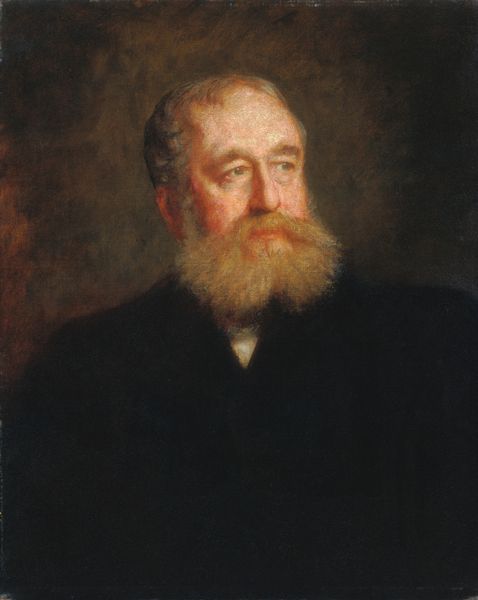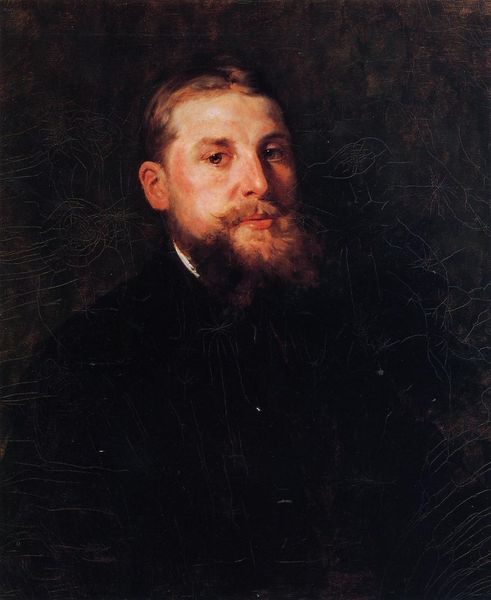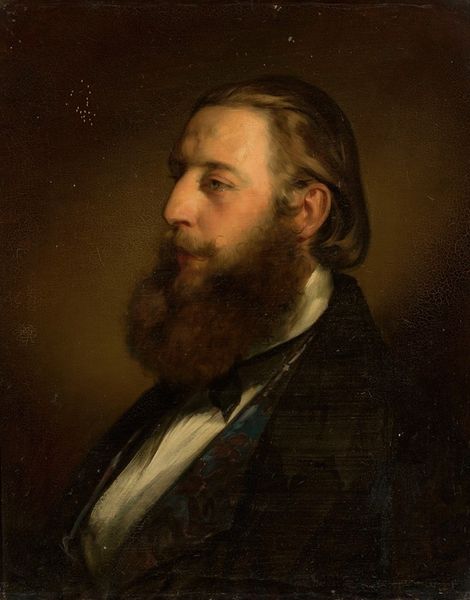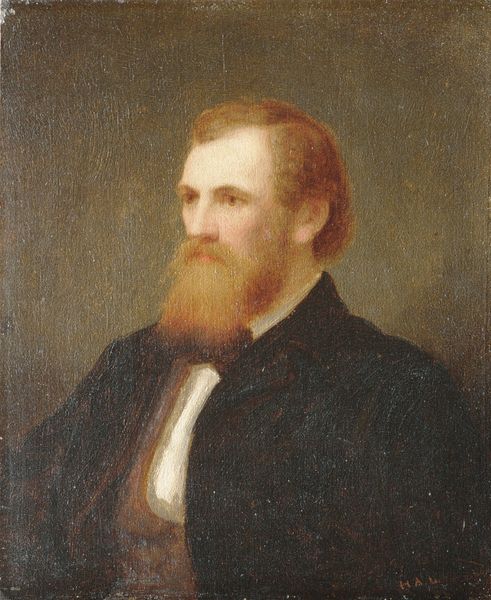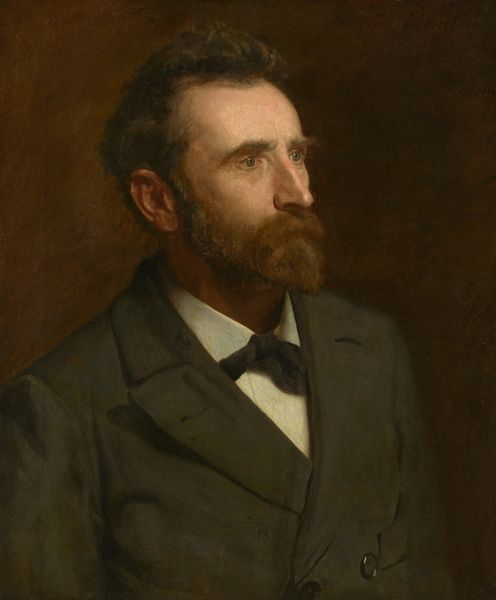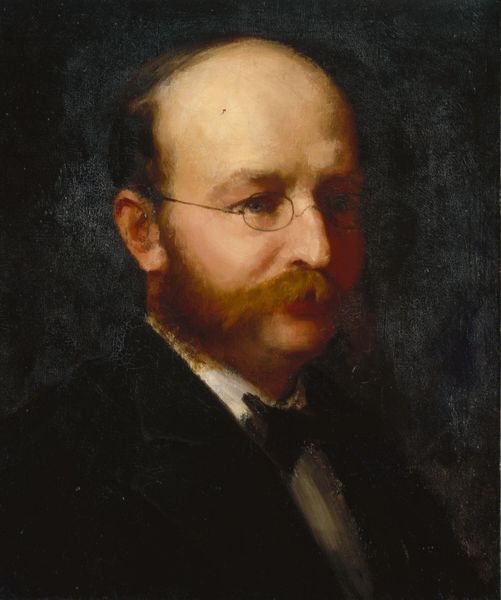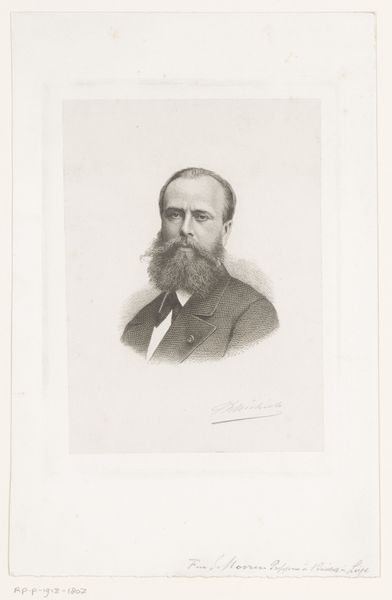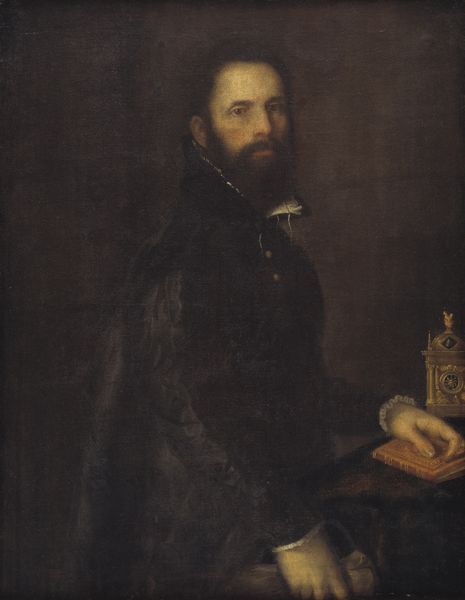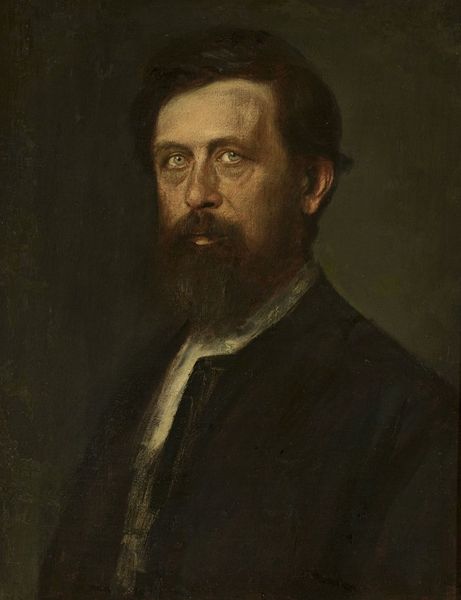
Dimensions: support: 610 x 508 mm
Copyright: CC-BY-NC-ND 4.0 DEED, Photo: Tate
Editor: This is George Frederic Watts' portrait of Eustace Smith. The dark canvas makes the subject's face glow. I'm curious about what lies beneath the surface, materially speaking. What can we learn from how it was made? Curator: I see the layering of paint as a deliberate act, not just to capture likeness, but to build a social narrative. The artist's labor, the pigment's source, even the canvas itself – they all speak to Victorian industrialism and its impact on artistic production. Editor: So, it's not just about the individual depicted, but the entire system that allowed the painting to exist? Curator: Precisely! Consider the economic forces at play, the accessibility of materials, and how Watts positions himself within this network of production and consumption. Editor: That shifts my perspective entirely! It's like reading the painting as a document of its time. Curator: Indeed. We've only scratched the surface, but this approach reveals how art is deeply embedded in material and social conditions.
